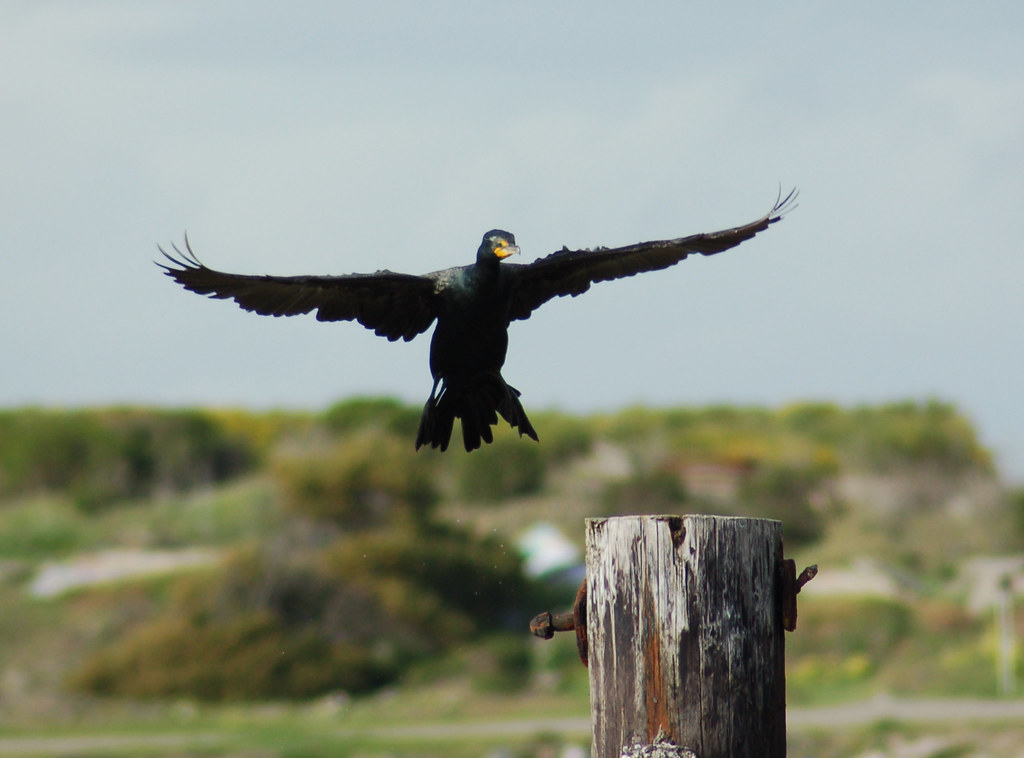Happy Monday!

A Double-Crested Cormorant comes in for a landing. These aquatic birds are unusual in not having waterproofed feathers. This makes them less buoyant than other diving birds, and helps them dive more deeply for prey. But it also means that they have to air-dry-their feathers to avoid hypothermia. Cormorants can be observed, standing quite still with their wings fully spread. Robb and I think they look oddly ominous when they do this.

This is, perhaps, the very first Black Oystercatcher I've ever seen. Robb and I were driving away from the shore when I said, "hang on.....I don't know what that bird is," and hopped out to take a few photos. This bird is exclusively a West Coast bird, from Alaska to Southern California. They like rocky tidal pools, where they use their bright red bills to pry open shells.

Finally, a Flotilla of Excellent Noses. The bird on the left is a first-winter male Surf Scoter. His bill isn't as colorful as the older male on the right, nor does he have the white feathers on his neck and forehead. The duck in the middle is a female Scaup. Serious birders can tell the two local species of Scaups apart, but Robb and I are careful to never be mistaken for Serious People!
Click on the photos to enlarge the images. The Oystercatcher is worth a second look. Its bright yellow eye has particularly freaky red eyelids.

Comments
Zoe
leslie
But, yeah...the Black Oystercatcher is a new bird for me.
Specifically speaking, how is your rat garden? The green-thumbed readers of your blog want to know. I'm awaiting blog photos soon of the alternative native wild life that inhabits your future Eden. Is that a go yet? I am thinking about getting a truckload of seaweed to put in mine one day, you guys are a lot closer to that fertilizer source than I am. Perhaps rat poop makes a really powerful fertilizer, and you should encourage even more to show up.
I'm only slightly joking here.
Annalisa